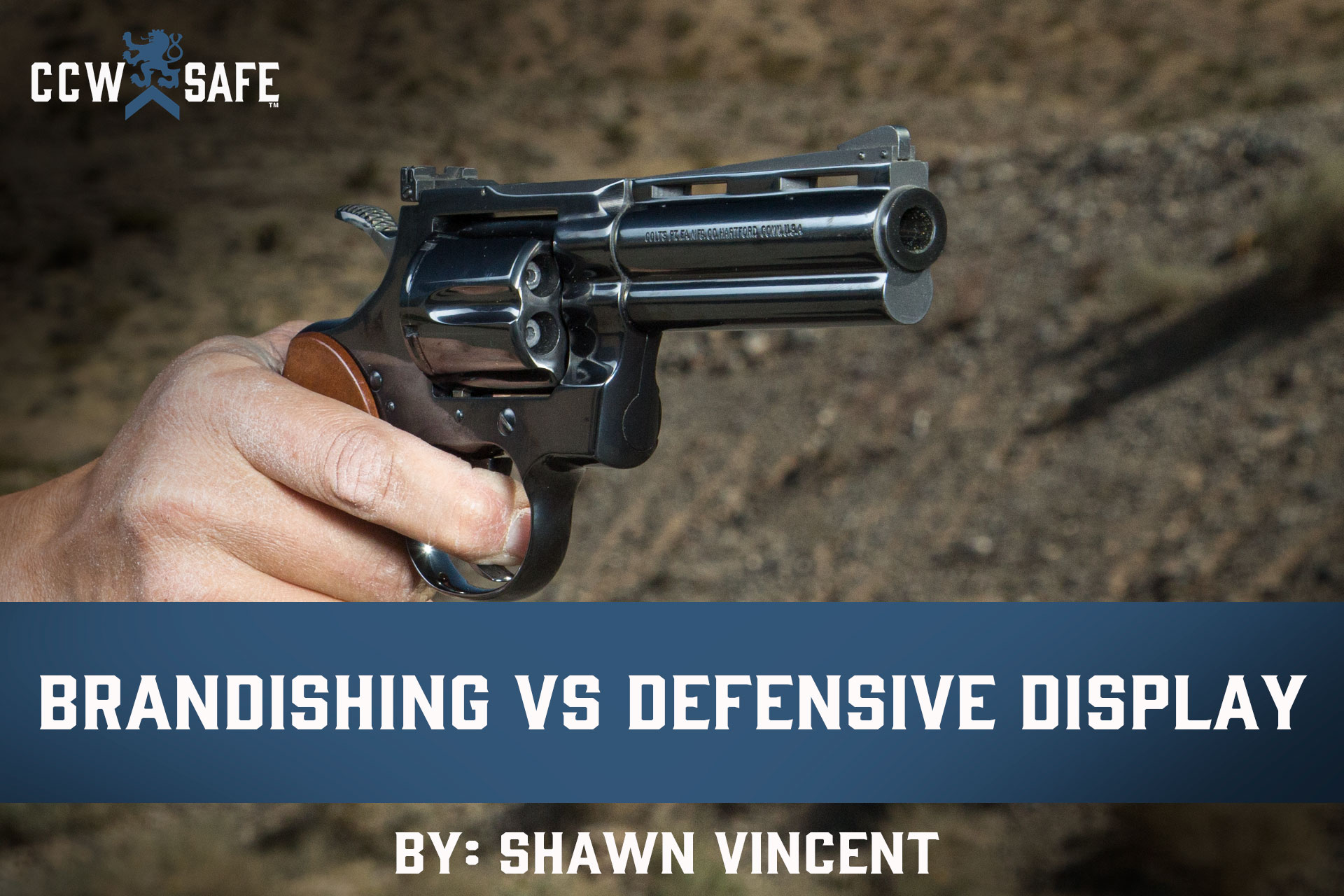
Posted on August 9, 2019
Brandishing a Firearm Vs. Defensive Display
Brandishing a Firearm Versus a Defensive Display
If you carry a concealed handgun, it’s important to know what it means to brandish a firearm. It’s also important to know what it means to defensively display your handgun. There are differences between these two actions, and not knowing what they mean can get you into legal trouble. Through two case examples, we will explain the difference between brandishing your firearm and the act of defensive display to help clarify these two actions that can factor into a criminal self-defense trial.
Brandishing Definition
When an individual brandishes a firearm, it means that they show a firearm to another person in an angry, threatening or careless manner. This can lead to an Improper Display of a Firearms offense. To obtain a conviction for this charge the state needs to prove: 1) that the accused carried or otherwise possessed a firearm, 2) the accused showed the weapon in an angry, rude, threatening or careless manner, and 3) the accused improperly displayed the weapon in front of at least one other person.
Defensive Display
A defensive display is a justification defense in which the accused argues that their conduct was legally justified (although that conduct would ordinarily constitute a crime). These justifications include:
- Self-defense
- Defense of a premises
- Defense of others
- Crime prevention
- Duress
- Necessity
Defensive display includes three factors:
- Firearm exposure or display in a manner that a reasonable person would understand was meant to protect the person against another’s attempted use or use of physical or deadly force.
- Verbally informing another person that the individual possesses a firearm.
- Placing an individual’s hand on the pocket, side or other area where the firearm is located.
Case #1: Brandon Jackson’s Road Rage
Brandon Jackson got upset at another driver in traffic and experienced a bout of road rage. We don’t know what the woman did to enrage him, but when the two drivers stopped at a red light, Jackson produced a pistol. He pointed the gun at her and then began yelling. Terrified, the woman hit the gas, ran the red light and drove away as fast as possible. She also dialed 911 for help.
Jackson drove off and got onto Interstate 80, near Sacramento, California. Just a few miles down the road, officers from three separate law enforcement agencies (including the California Highway Patrol) spotted Jackson’s vehicle. They pulled him over and made an arrest. According to news reports, Jackson was booked into Solano County Jail on suspicion of a weapons violation and criminal threats. In other words, he was “brandishing” a weapon.
Don West, veteran criminal defense attorney and National Trial Counsel for CCW Safe, explains that people often use the term “brandishing” loosely to describe the reckless display of a gun. But this term has a specific legal definition as well.
“When we talk about brandishing, we’re talking about an aggressive act that is a crime in and of itself, and it can have serious consequences,” West said.
Often, those consequences mean jail time.
In many jurisdictions, brandishing can come with a spate of related charges. In the I-80 incident, Jackson was charged with “producing criminal threats.”
In another recent case, a woman pulled out a gun during a fight that followed a high school dance competition. She was charged with “simple assault” in addition to brandishing. Don West says “aggravated assault” charges are common in such cases.
Any responsible gun owner should recognize that Brandon Jackson’s actions were unjustified and inexcusable , but sometimes the situation isn’t as clear.
Case #2: The Laundromat Attendant
Recently, we wrote about the case of Sheri McClatchy, a laundromat attendant who was attacked by an angry patron. The patron was enraged over a dispute about the laundromat’s refund policy. McClatchy escaped the clutches of the patron and retreated outside, where she called 911. She then armed herself with a pistol. When the patron reengaged with her, McClatchy raised her pistol. W isely, the patron left the scene. No shots were fired.
Since the episode was captured on security video and because McClatchy called 911, the police gave her the benefit of the doubt. The “defensive display” of her pistol was deemed justified.
Imagine, however, if there was no video footage to corroborate McClatchy’s story, demonstrating that the patron was the initial aggressor. What if the angry patron called 911 first, reporting that the laundromat attendant had pulled a gun on her? Legally speaking, it could have been a very different outcome for McClatchy.
The Basic Rule for Displaying a Firearm
Using a firearm for self-defense is serious, even if you don’t fire it. Brandon Jackson didn’t recognize this fac t. O therwise, he would have disengaged and driven off, keeping his gun tucked away.
Sheri McClatchy, on the other hand, recognized the seriousness of a defensive firearm display. She had the foresight and good judgment to call the police – even as the encounter was unfolding.
The rule of thumb is that you should never display your firearm unless you’re also justified in the use of deadly force. But perhaps a more important lesson for concealed carriers here is this: Should you ever have to display your firearm in self-defense, consider any such display as serious as if you had to fire your weapon. Be the first person to call 911 to report the incident, cooperate with law enforcement and don’t make any detailed statements to law enforcement without a good attorney present.
 |
SHAWN VINCENT- LITIGATION CONSULTANTShawn Vincent is a litigation consultant who helps select juries in self-defense cases, and he manages public interest of high-profile legal matters. If you have any questions for Shawn, or would like more articles like this, let us know belo |